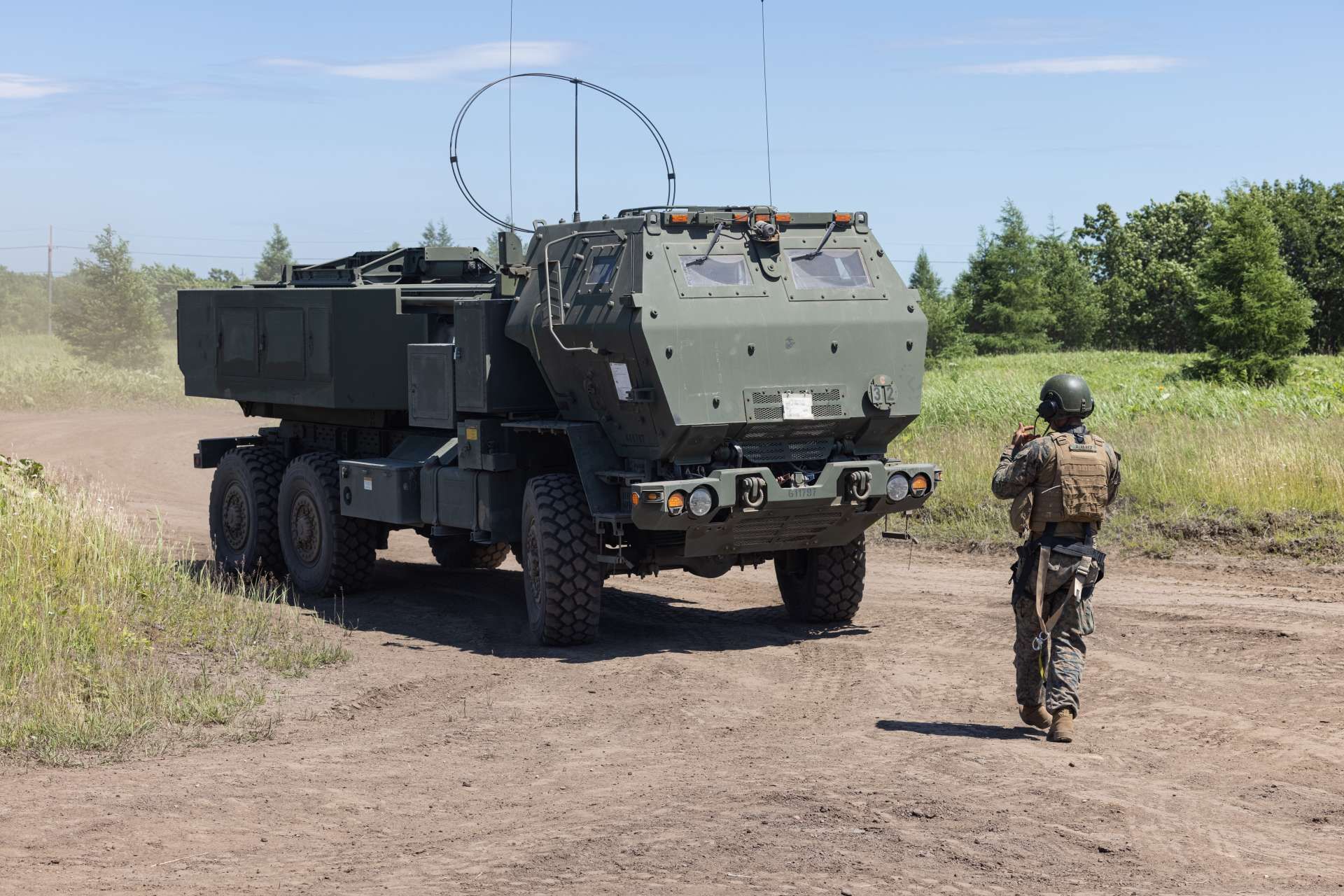Breaking News
Breaking News: US Approves Sale of 8 HIMARS Rocket Launchers to Croatia Amid Rising Tensions with Serbia.
On August 30, 2024, the U.S. State Department approved a significant Foreign Military Sale to the Government of Croatia, potentially worth $390 million. The sale includes eight M142 High Mobility Artillery Rocket Systems (HIMARS) and an array of related equipment and services. The Defense Security Cooperation Agency formally notified Congress of the potential transaction, marking a notable enhancement in Croatia’s military capabilities.
Follow Army Recognition on Google News at this link

U.S. Marine Corps Cpl. Kevin Alvarez ground guides a High Mobility Artillery Rocket System during Orient Shield 24 at the Yausubetsu Maneuver Area, Hokkaido, Japan, July 22, 2024. (Picture source: U.S. DoD)
The proposed package encompasses not only the M142 HIMARS units but also twenty-four M30A2 Guided Multiple Launch Rocket System (GMLRS) Alternative Warhead Pods, twenty-four M31A2 GMLRS-Unitary High Explosive Pods, and a variety of support vehicles and communications equipment. This deal is seen as a strategic move to bolster Croatia’s defense infrastructure, reflecting the growing military collaboration between the U.S. and its European allies.
M142 HIMARS, or the High Mobility Artillery Rocket System, is a versatile, highly mobile, and advanced rocket launcher system developed by the United States. It is designed to provide rapid and precise long-range fire support for military forces. Mounted on a wheeled chassis, HIMARS can be quickly deployed and repositioned, allowing it to deliver powerful artillery strikes with a variety of munitions, including guided rockets with a range of up to 70 kilometers and ATACMS missiles capable of reaching targets at distances up to 300 kilometers. Its flexibility, precision, and extended range make it a critical asset in modern warfare, capable of engaging targets while maintaining a high degree of mobility and survivability on the battlefield.
The United States has a history of supplying military equipment to Croatia, underscoring a strong defense partnership between the two countries. In recent years, this support has included delivering advanced military hardware such as transport helicopters and armored vehicles. In 2018, the U.S. provided Croatia with two S-70 Black Hawk helicopters, followed by an additional two Black Hawks in 2021, all in the UH-60M version. This delivery was part of a broader military aid package valued at $53 million. In 2015, Croatia received six MaxxPro armored personnel carriers (APCs) from the U.S., focusing on recovery vehicle versions. In 2016, the U.S. supplied Croatia with 16 Bell-206/OH-58D(I) combat helicopters, part of a deal with significant financial aid. In 2016, Croatia received 100 AGM-114 Hellfire-2 anti-tank missiles for use with their OH-58D helicopters. This ongoing military support highlights the deepening strategic relationship between the U.S. and Croatia, aimed at enhancing Croatia’s defense capabilities in a region marked by historical tensions.
This military enhancement in Croatia comes amid escalating tensions with neighboring Serbia. Relations between the two countries have been increasingly strained over the past few years, primarily due to lingering historical grievances and disputes over minority rights and border issues. The sale of advanced military systems to Croatia is likely to exacerbate these tensions, as Serbia has frequently expressed concerns over the militarization of its neighbors.
Introducing HIMARS into Croatia’s arsenal significantly boosts its long-range strike capabilities, a development that could shift the regional balance of power. This could prompt Serbia to seek further military support from its allies, heightening the risk of an arms buildup in the already volatile region.
The U.S. decision to approve this sale will likely have far-reaching implications for the stability of the Balkans. While the move is intended to strengthen Croatia’s defense posture, it may inadvertently increase regional tensions. Serbia’s potential response to this development could involve increased military spending.
Moreover, the sale could strain Croatia’s diplomatic relations with Serbia, complicating ongoing efforts to resolve bilateral issues and achieve long-term peace in the region. The European Union, which has been actively engaged in mediating disputes in the Balkans, may find its role more challenging as the military dynamics between Croatia and Serbia evolve.
As Croatia prepares to integrate these advanced systems into its military, the broader geopolitical implications of the sale will undoubtedly be closely monitored by regional and global powers alike. The U.S. State Department’s approval marks a pivotal moment in the Balkans, where historical tensions and modern military capabilities are converging in a complex and potentially destabilizing manner.


























